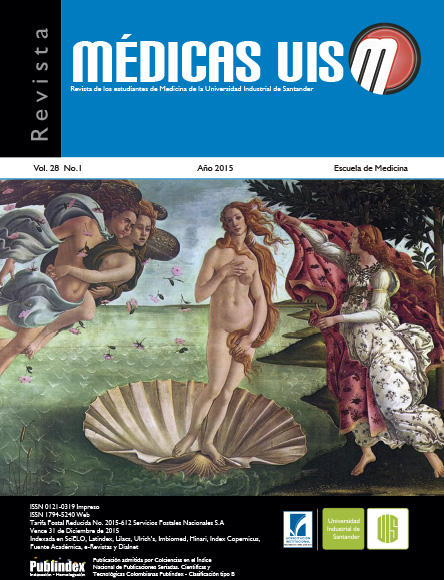Abstract
Background: at present have not been systematized the researches on quality of life of adolescents, despite their scientific, health, socio-economic and political relevance. Objective: to characterize the studies in Health-related quality of life of adolescents, 1970- 2013. Methods: a systematic review in six multidisciplinary databases, following the phases of identification, screening, eligibility and inclusion. The research protocol was applied by two researchers independently to ensure the reproducibility of the study. Results: The study included 909 researches with 323 239 healthy adolescents; in the studies with patients the most high frequency was in circulatory diseases (n= 12 325), nervous system (n= 6 590), musculoskeletal (n= 6 236, blood system (n= 4 807), cancer (n= 4 491) and infectious (n= 3,677). 43.1 % made in America and 39.9 % in Europe. 170 scales of Health related quality of life were identified, they more frequently was Pediatric Quality of Life Inventory with 22.2%, Medical Outcome Study Short Form in 7.6 % , Child Health Questionnaire 5.8% , German generic quality of life instrument for children 5.3% and KIDSCREEN 5.1%. Conclusion: scientific production in Health-related quality of life of adolescents has been focused on chronic diseases; the relevance of this issue for all medical specialties and public health was evident, and the availability of a large number of validated instruments for healthy and sick population. Nevertheless, research predominate in high-income countries which exposes the need for further research to adapt and validate scales and to generate evidence on middle and low incomes. MÉD.UIS. 2015;28(1):23 30.
Keywords: Quality of life, Insurance benefits, Adolescent, Review.
References
Fondo de las Naciones Unidas para la Infancia (UNICEF). Estado mundial de la infancia 2011. La adolescencia: Una época de oportunidades [Monografía en Internet]. 2011 [Citado Nov 2013]. Disponible en: http://www.unicef.org/spanish/sowc2011/
United Nations Children’s Fund (UNICEF). Progress for children: A report card on adolescents [Monografía en Internet]. Nueva York; 2012. [Citado Dic 2013]. Disponible en: http://www.unicef.org/media/files/PFC2012_A_report_card_on_adolescents.pdf
Michaud PA, Suris JC, Viner R, Department of child and adolescent health and development. The adolescent with a chronic condition [Monografía en Internet]. Switzerland: Inís; 2007. [Citado Dic 2013]. Disponible en: http://www.who.int/
maternal_child_adolescent/documents/9789241595704/en/
Fondo de las Naciones Unidas para la infancia (UNICEF). La adolescencia una etapa fundamental [Monografía en Internet]. Nueva York: Sección editorial y de publicaciones; 2002. [Citado Dic 2013]. Disponible en: http://www.unicef.org/guatemala/ spanish/adolescencia.pdf
Grupo de la OMS sobre la calidad de vida. Qué calidad de vida. Foro Mundial de la Salud. Rev Int Desarro Sanit. 1996; 17(4):285–387.
Petersen-Ewert C, Erhart M, Ravens-Sieberer U. Assessing health-related quality of life in European children and adolescents. Neurosci Biobehav Rev. 2011;35(8):1752-56.
Edwards TC, Huebner CE, Connell FA, Patrick DL. Adolescent quality of life, part I: conceptual and measurement model. J Adolesc. 2002;25(3):275-86.
de Sá Novato T , Grossi SAA. Factors associated to the quality of life of adolescents with type 1 diabetes mellitus. Rev Esc Enferm USP. 2011;45(3):770-6.
Riazi A, Shakoor S, Dundas I, Eiser C, McKenzie SA. Healthrelated quality of life in a clinical sample of obese children and adolescents. Health Qual Life Outcomes. 2010; 8:134.
Marciano RC, Soares CM, Diniz JS, Lima EM, Silva JM, Canhestro MR, et al. Behavioral disorders and low quality of life in children and adolescents with chronic kidney disease. Pediatr Nephrol. 2011;26(2):281–90.
Sawin KJ, Brei TJ, Buran CF, Fastenau PS. Factors associated with quality of life in adolescents with spina bifida. J Holist Nurs. 2002;20(3):279–304.
Masquillier C, Wouters E, Loos J, Nöstlinger C. Measuring health-related quality of life of HIV-positive adolescents in resource-constrained settings. PLos ONE. 2012;7(7):e40628.
Martinović Z, Simonović P, Djokić R. Preventing depression in adolescents with epilepsy. Epilepsy Behav. 2006;9(4):619–24.
Rutishauser C, Sawyer SM, Bowes G. Quality-of-life assessment in children and adolescents with asthma. Eur Respir J. 1998;12(2):486–94.
Bullinger M, von Mackensen S. Psycho-social determinants of quality of life in children and adolescents with haemophilia-a cross-cultural approach. Clin Psychol Psychother. 2008;15(3):164–72.
Lin JH, Ju YH, Lee SJ, Lee CH, Wang HY, Teng YL, et al. Do physical disabilities affect self-perceived quality of life in adolescents? Disabil Rehabil. 2009;31(3):181-8.
Shaw KL, Southwood TR, Duffy CM, McDonagh JE. Healthrelated quality of life in adolescents with juvenile idiopathic arthritis. Arthritis Rheum. 2006;55(2):199–207.
Somrongthong R, Wongchalee S, Laosee O. Depression among adolescents: a study in a Bangkok slum community. Scand J Caring Sci. 2013;27(2):327–34.
Oren A, Benoit MA, Murphy A, Schulte F, Hamilton J. Quality of life and anxiety in adolescents with differentiated thyroidcancer. J Clin Endocrin ol Metab. 2012;97(10): E1933–7.
Rodríguez-Artalejo F, Guallar-Castillón P, Pascual CR, Otero CM, Montes AO, García AN, et al. Health-related quality of life as a predictor of hospital readmission and death among patients with heart failure. Arch Intern Med. 2005;165(11):1274–9.
Analitis F, Velderman MK, Ravens-Sieberer U, Detmar S, Erhart M, Herdman M, et al. Being bullied: associated factors in children and adolescents 8 to 18 years old in 11 European countries. Pediatrics. 2009;123(2):569–77.
Moher D, Liberati A, Tetzlaff J, Altman D, PRISMA Group. Preferred reporting Items for systematic reviews and metaanalyses: the PRISMA statement. PloS med. 2009;6(7): e1000097.
Landis JR, Koch GG. The measurement of observer agreement for categorical data. Biometrics. 1977;33(1):159-74.
Chen T, Li L, Kochen MM. A systematic review: how to choose appropriate health-related quality of life (HRQOL) measures in routine general practice? J Zhejiang Univ Sci B. 2005;6(9):936–40.
Huang IC, Shenkman EA, Leite W, Knapp CA, Thompson LA, Revicki DA. Agreement was not found in adolescents’ quality of life rated by parents and adolescents. J Clin Epidemiol. 2009;62(3): 337-46.
World Health Organization. The African Regional Health Report: The Health of the People [Monografía en Internet]. WHO Regional office for Africa. 2006. [Citado Dic 2013]. Disponible en: http://www.who.int/bulletin/africanhealth/en/index.html
